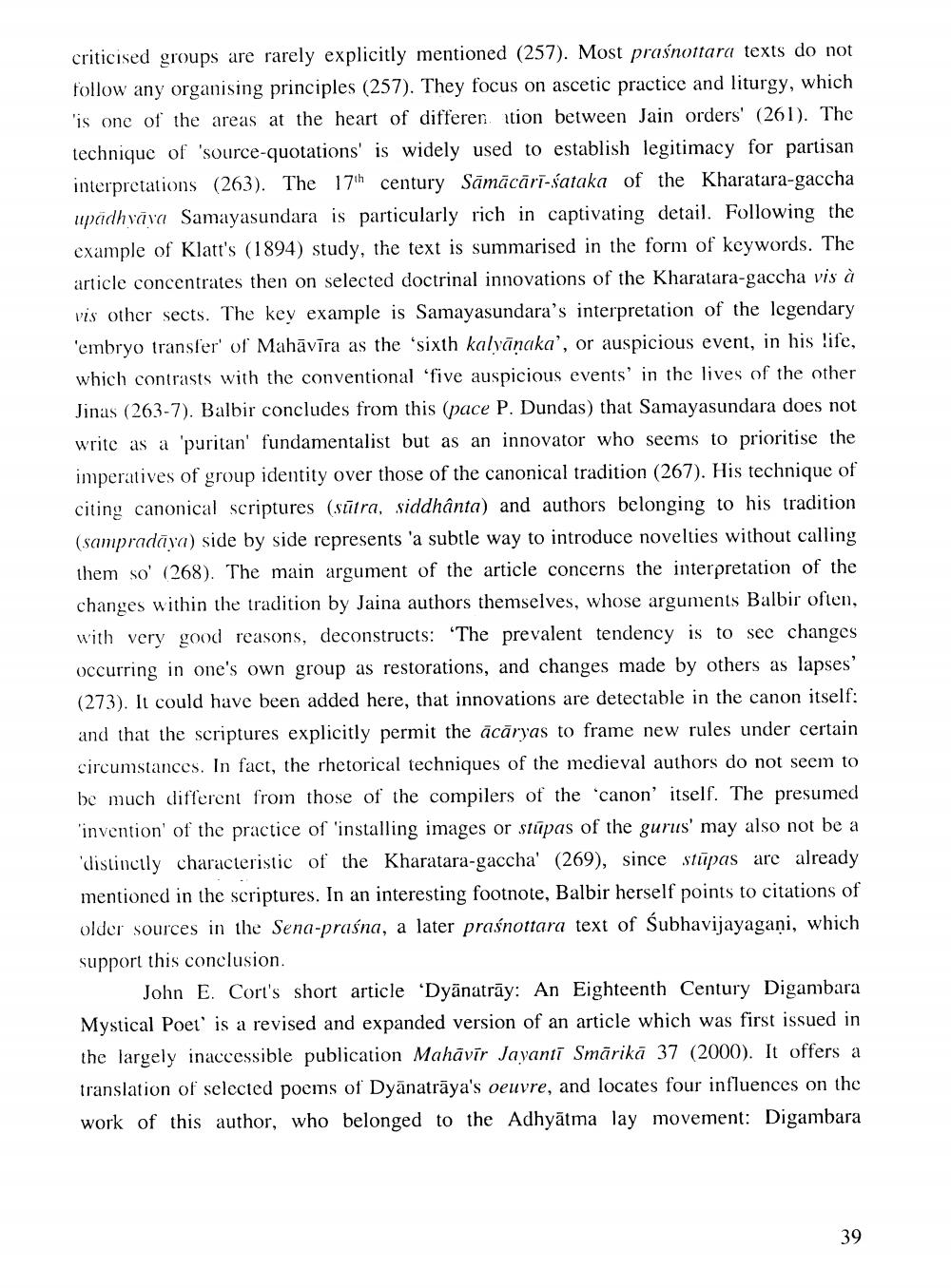________________
criticised groups are rarely explicitly mentioned (257). Most praśnottara texts do not follow any organising principles (257). They focus on ascetic practice and liturgy, which 'is one of the areas at the heart of differention between Jain orders' (261). The technique of 'source-quotations' is widely used to establish legitimacy for partisan interpretations (263). The 17th century Sāmācāri-śataka of the Kharatara-gaccha upadhyāva Samayasundara is particularly rich in captivating detail. Following the example of Klatt's (1894) study, the text is summarised in the form of keywords. The article concentrates then on selected doctrinal innovations of the Kharatara-gaccha vis à vis other sects. The key example is Samayasundara's interpretation of the legendary 'embryo transfer' of Mahāvīra as the 'sixth kalvānaka', or auspicious event, in his life, which contrasts with the conventional 'five auspicious events in the lives of the other Jinas (263-7). Balbir concludes from this (pace P. Dundas) that Samayasundara does not write as a 'puritan' fundamentalist but as an innovator who seems to prioritise the imperatives of group identity over those of the canonical tradition (267). His technique of citing canonical scriptures (sutra, siddhanta) and authors belonging to his tradition (sampradaya) side by side represents 'a subtle way to introduce novelties without calling them so' (268). The main argument of the article concerns the interpretation of the changes within the tradition by Jaina authors themselves, whose arguments Balbir often, with very good reasons, deconstructs: "The prevalent tendency is to see changes occurring in one's own group as restorations, and changes made by others as lapses' (273). It could have been added here, that innovations are detectable in the canon itself: and that the scriptures explicitly permit the ācāryas to frame new rules under certain circumstances. In fact, the rhetorical techniques of the medieval authors do not seem to be much different from those of the compilers of the 'canon' itself. The presumed 'invention of the practice of 'installing images or stūpas of the gurus' may also not be a distinctly characteristic of the Kharatara-gaccha' (269), since stūpas are already mentioned in the scriptures. In an interesting footnote, Balbir herself points to citations of older sources in the Sena-praśna, a later praśnottara text of Subhavijayagani, which support this conclusion.
John E. Cort's short article 'Dyanatrāy: An Eighteenth Century Digambara Mystical Poet' is a revised and expanded version of an article which was first issued in the largely inaccessible publication Mahāvīr Jayanti Smärikā 37 (2000). It offers a translation of selected poems of Dyānatrāya's oeuvre, and locates four influences on the work of this author, who belonged to the Adhyātma lay movement: Digambara
39




